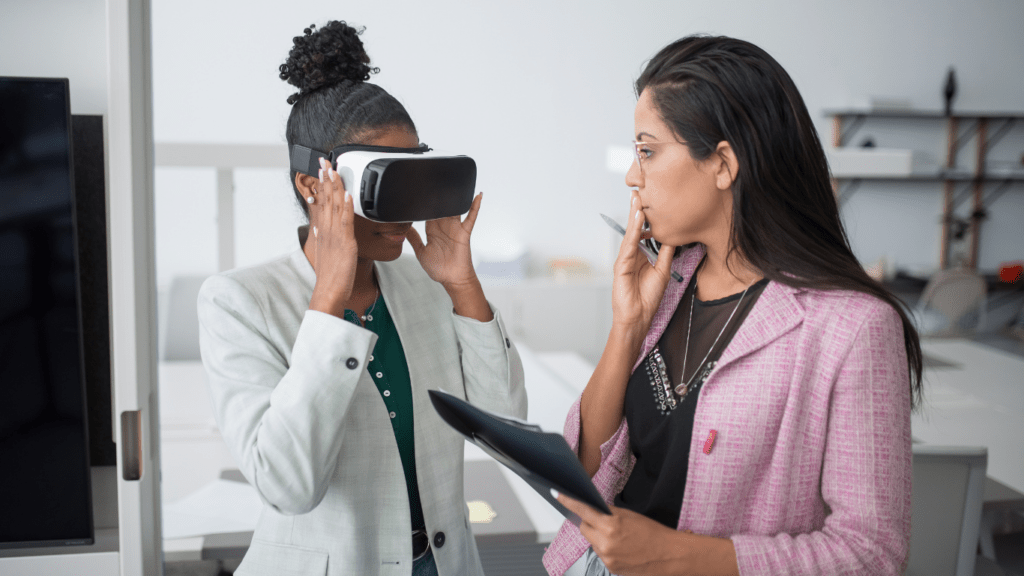Emerging Technologies in Modern Medicine
Innovations in technology are reshaping healthcare in profound ways. These innovations are enhancing patient care and making medical services more accessible than ever.
Telemedicine and Remote Diagnosis
Telemedicine is revolutionizing patient access to medical professionals. Using video calls and digital platforms, doctors can diagnose, consult, and treat patients without in-person visits.
This innovation is significant in rural or underserved areas where medical facilities are scarce. According to the American Journal of Managed Care, telemedicine visits increased by 154% during the COVID-19 pandemic, highlighting the growing trust in and reliance on this technology.
Remote diagnosis allows healthcare professionals to monitor patients in real-time. Devices like:
- portable ECG monitors
- glucose meters
- digital stethoscopes
transmit data directly to doctors, enabling timely interventions.
Research from the Journal of Medical Internet Research indicates these tools have reduced hospital readmission rates by 20%, illustrating their impact.
Wearable Health Monitors
Wearable health monitors track vital signs and lifestyle metrics, providing patients with real-time health data. Smartwatches, fitness bands, and biosensors measure heart rate, sleep patterns, physical activity, and more.
The National Institutes of Health shows that continuous glucose monitors improve glycemic control in diabetes patients, reducing A1C levels by up to 1%. These tools empower individuals to manage their health proactively.
These devices also support early detection of issues like arrhythmias or sleep apnea. For instance, a 2019 study by Stanford Health Care reported that smartwatches could detect atrial fibrillation with 87% accuracy.
This proactive monitoring helps reduce healthcare costs by preventing complications and emergency interventions.
Leveraging these emerging technologies, healthcare can evolve into a more preventive, efficient, and patient-centered field.
AI and Machine Learning in Healthcare
AI and machine learning are transforming healthcare practices. These technologies enable predictive analytics for patient care and automate surgical procedures.
Predictive Analytics for Patient Care
Predictive analytics leverages AI to forecast patient outcomes. It analyzes vast datasets to identify patterns and trends, aiding clinicians in making informed decisions.
For instance, machine learning models predict disease outbreaks by analyzing patient symptoms and environmental factors.
They also help in managing chronic diseases by monitoring patient data and suggesting timely interventions. According to a 2021 study from Johns Hopkins, predictive analytics reduced hospital readmissions by 20%.
Automation in Surgical Procedures
Automation in surgical procedures enhances precision and efficiency. Robotic systems, guided by AI, perform complex surgeries with high accuracy.
For example, the da Vinci Surgical System enables minimally invasive procedures, reducing recovery times and complications. AI algorithms assist surgeons by providing real-time insights and potential risk assessments.
In 2022, a study published in The Lancet found that robotic-assisted surgeries had a 15% lower complication rate compared to traditional methods.
Blockchain for Health Data Security

Blockchain technology ensures the security and integrity of health data. It offers solutions to various challenges in the healthcare industry.
Ensuring Privacy and Compliance
Blockchain provides an immutable and transparent record for patient information. It secures data using cryptographic algorithms, making it tamper-proof.
By storing information in decentralized ledgers, blockchain reduces the risk of data breaches. It helps comply with regulations like HIPAA, ensuring that patient data remains private and secure.
For instance, Guardtime, a cybersecurity company, uses blockchain to secure over one million health records in Estonia.
Streamlining Medical Record Accessibility
Blockchain facilitates the seamless sharing of medical records among authorized parties. It creates a unified system where patients, doctors, and healthcare providers can access up-to-date patient information.
This accessibility improves care coordination and reduces duplication of tests. Patients can control who accesses their data, providing consent through smart contracts.
An example is the MIT-led MedRec project, which leverages blockchain to streamline the management and sharing of electronic medical records.
Impact of Virtual Reality and Augmented Reality
Virtual reality (VR) and augmented reality (AR) are quickly transforming healthcare, offering new solutions in medical training, patient treatment, and rehabilitation.
Training and Simulation for Medical Professionals
- VR and AR provide immersive training environments for medical professionals.
- Using VR, surgeons can practice complex procedures in a controlled, risk-free setting. Johns Hopkins developed a VR simulation for spinal surgery, reducing trainee error rates by 50%.
- AR enhances real-time visualization for surgeons. During surgery, AR overlays vital information, like patient imaging data, directly onto the surgical field.
- This integration helps in making precise surgical decisions and improving accuracy. ]Microsoft HoloLens assists in orthopedic surgeries by projecting 3D models of bone structures.
Enhancing Patient Treatment and Rehabilitation
Patients benefit significantly from VR and AR in treatment and rehabilitation. VR aids in pain management by distracting patients from discomfort, creating a calming experience.
Burn patients, undergoing painful dressing changes, reported up to a 50% reduction in pain using VR systems, as documented by Cedars-Sinai Medical Center.
In rehabilitation, AR offers interactive exercises tailored to patient needs. Stroke patients use AR-based therapy to regain motor skills. Sensors track movements, providing real-time feedback.
A study by the University of South Australia showed 30% improvement in motor function among participants using AR rehabilitation compared to traditional methods.
Through innovative applications, VR and AR are reshaping the training and treatment landscape in healthcare, making procedures safer and recovery more effective.
ABOUT THE AUTHOR
Jack Holmquist
Jack Holmquist is a key contributor and article writer at The Global Reach Visionary, where his expertise in global economics and international trade brings valuable insights to the platform. With a keen analytical mind and a deep understanding of shifting global dynamics, Jack skillfully dissects complex economic trends, offering clear, well-researched, and engaging articles. His ability to present intricate topics in a digestible and thought-provoking manner makes his work an essential resource for professionals, investors, and readers eager to stay informed about the ever-evolving global landscape.




